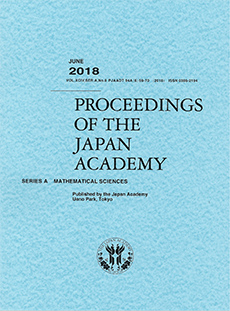Abstract
From a finite number of Riemann surfaces $W_j\ (j\in J:=\{ 1,2,\cdots ,m\} )$ we form two kinds of Riemann surfaces, one of which is a united surface ${\bigcup {\times}}_{j \in J}W_j$ and the other is simply a bunched surface $\bigcup _{j \in J} W_j$. We compare the space $H( {\bigcup {\times}} _{j \in J}W_j)$ of harmonic functions on $ {\bigcup {\times}}_{j \in J}W_j$ and the space $H(\bigcup _{j \in J}W_j)$ of harmonic functions on $\bigcup _{j \in J}W_j$ and show that these are canonically isomorphic, i.e. $$ H\Bigl ({\bigcup {\times}}_{j \in J}W_j\Bigr )\cong H\Bigl ({\bigcup }_{j \in J}W_j\Bigr ) $$ in the sense that there is a bijective mapping $t$ of the former space onto the latter space such that $t$ is linearly isomorphic, $t$ preserves orders, i.e. $tu\geqq 0$ if and only if $u\geqq 0$, and $t$ fixes the real number field ${\bf R}$, i.e. $t\lambda =\lambda $ for every $\lambda \in {\bf R}$, under the standing assumption that all the $W_j$ are hyperbolic. The result is then applied to give a sufficient condition better than our former one for an afforested surface to belong to the class ${\cal O}_s$ of hyperbolic Riemann surfaces carrying no nonzero singular harmonic functions when its plantation and trees on it are all in ${\cal O}_s$.
Citation
Mitsuru Nakai. Shigeo Segawa. Toshimasa Tada. "Surfaces carrying no singular functions." Proc. Japan Acad. Ser. A Math. Sci. 85 (10) 163 - 166, December 2009. https://doi.org/10.3792/pjaa.85.163
Information





